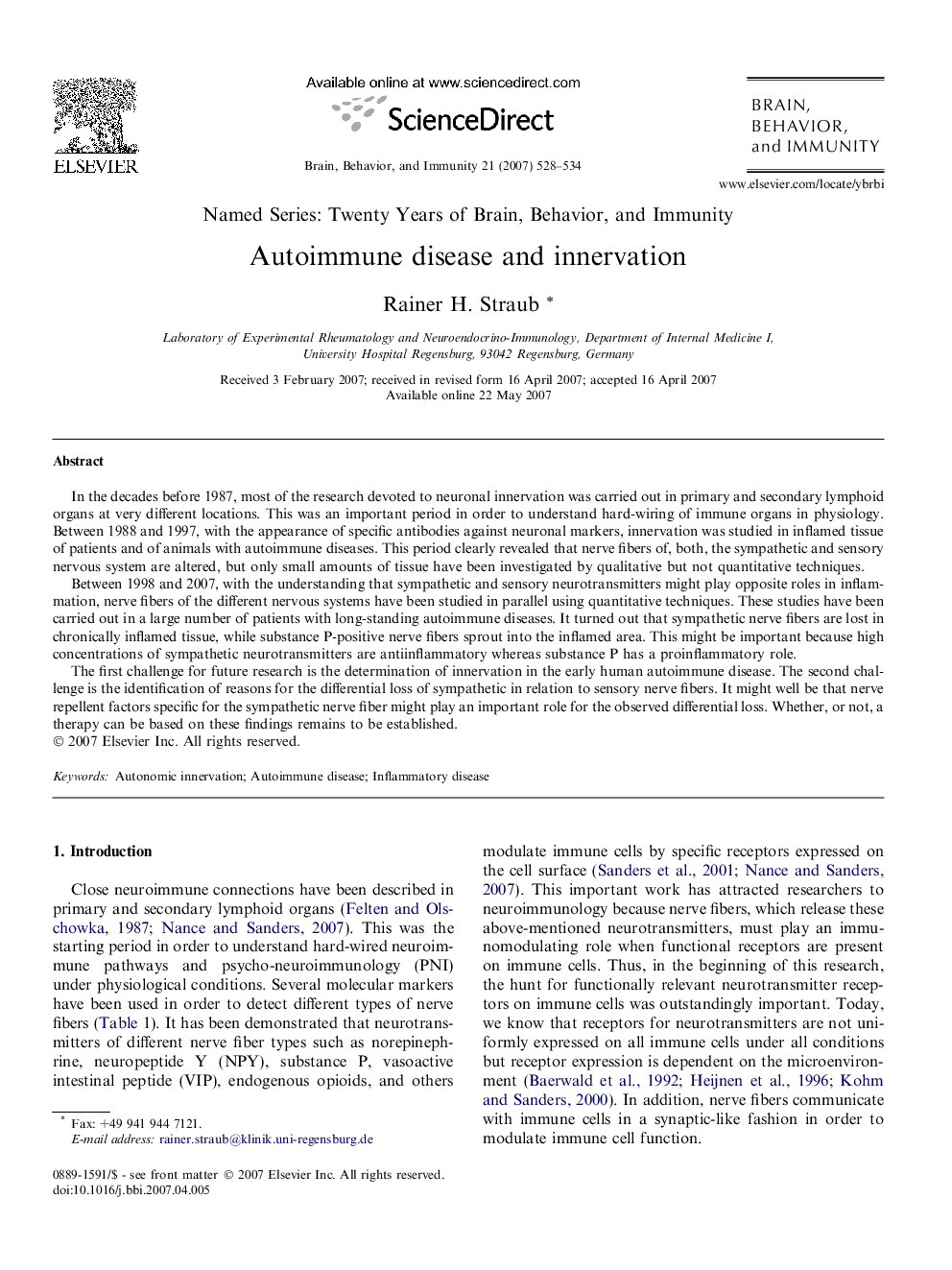| Article ID | Journal | Published Year | Pages | File Type |
|---|---|---|---|---|
| 923732 | Brain, Behavior, and Immunity | 2007 | 7 Pages |
In the decades before 1987, most of the research devoted to neuronal innervation was carried out in primary and secondary lymphoid organs at very different locations. This was an important period in order to understand hard-wiring of immune organs in physiology. Between 1988 and 1997, with the appearance of specific antibodies against neuronal markers, innervation was studied in inflamed tissue of patients and of animals with autoimmune diseases. This period clearly revealed that nerve fibers of, both, the sympathetic and sensory nervous system are altered, but only small amounts of tissue have been investigated by qualitative but not quantitative techniques.Between 1998 and 2007, with the understanding that sympathetic and sensory neurotransmitters might play opposite roles in inflammation, nerve fibers of the different nervous systems have been studied in parallel using quantitative techniques. These studies have been carried out in a large number of patients with long-standing autoimmune diseases. It turned out that sympathetic nerve fibers are lost in chronically inflamed tissue, while substance P-positive nerve fibers sprout into the inflamed area. This might be important because high concentrations of sympathetic neurotransmitters are antiinflammatory whereas substance P has a proinflammatory role.The first challenge for future research is the determination of innervation in the early human autoimmune disease. The second challenge is the identification of reasons for the differential loss of sympathetic in relation to sensory nerve fibers. It might well be that nerve repellent factors specific for the sympathetic nerve fiber might play an important role for the observed differential loss. Whether, or not, a therapy can be based on these findings remains to be established.
